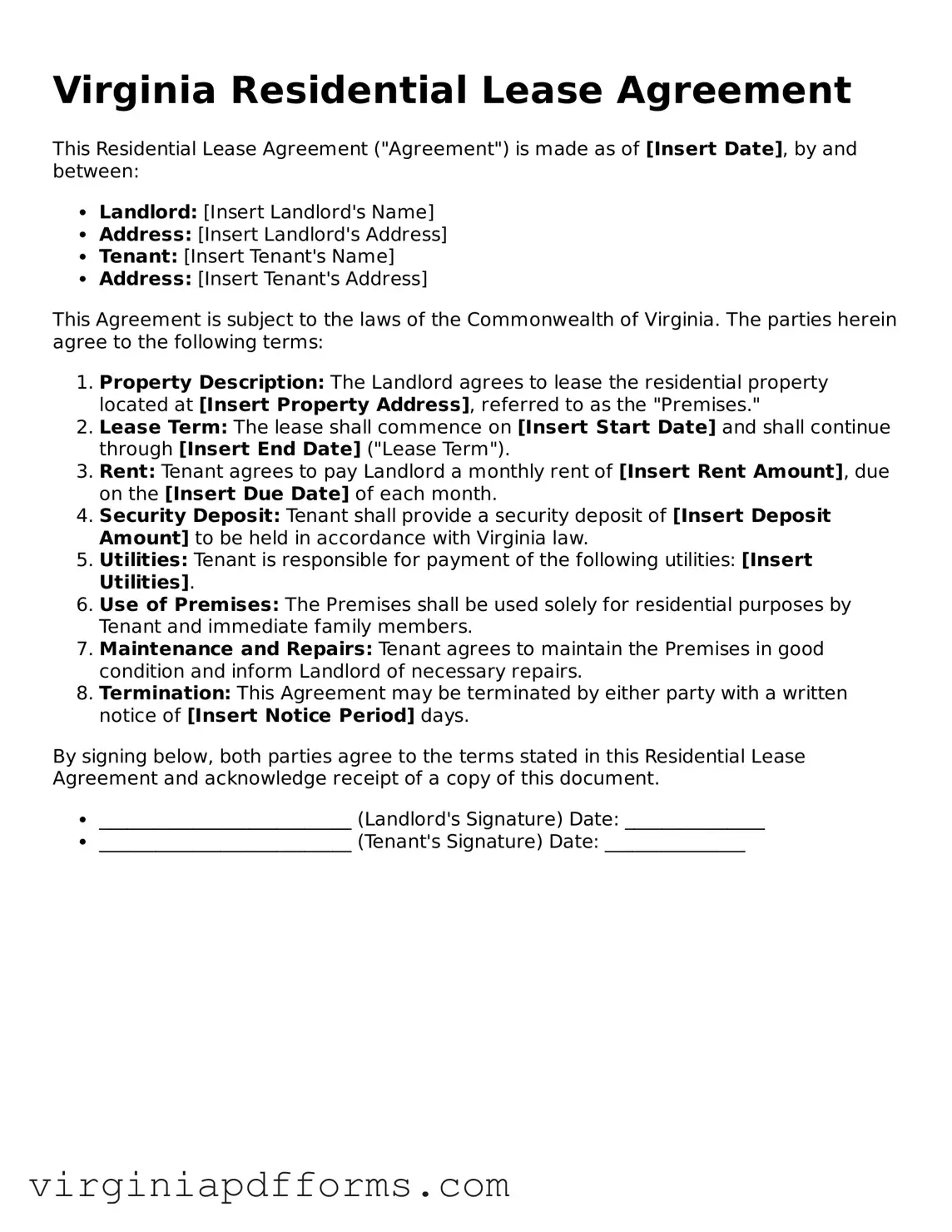Attorney-Approved Virginia Residential Lease Agreement Document
The Virginia Residential Lease Agreement is a legal document that outlines the terms and conditions between a landlord and tenant for renting residential property in Virginia. This form serves to protect the rights of both parties while providing clarity on rental obligations. Understanding its components is essential for a smooth leasing experience.
Access My Document Now
